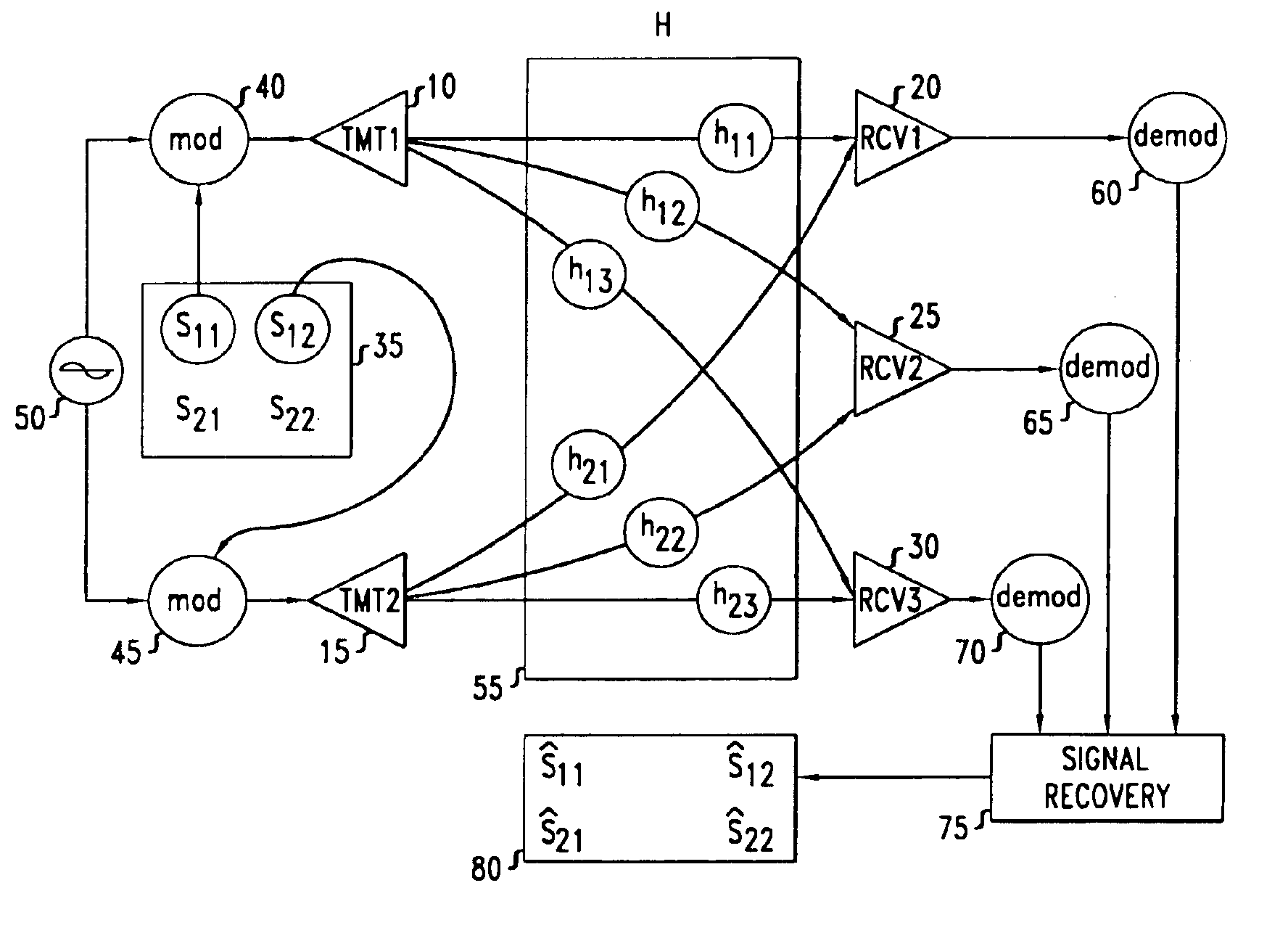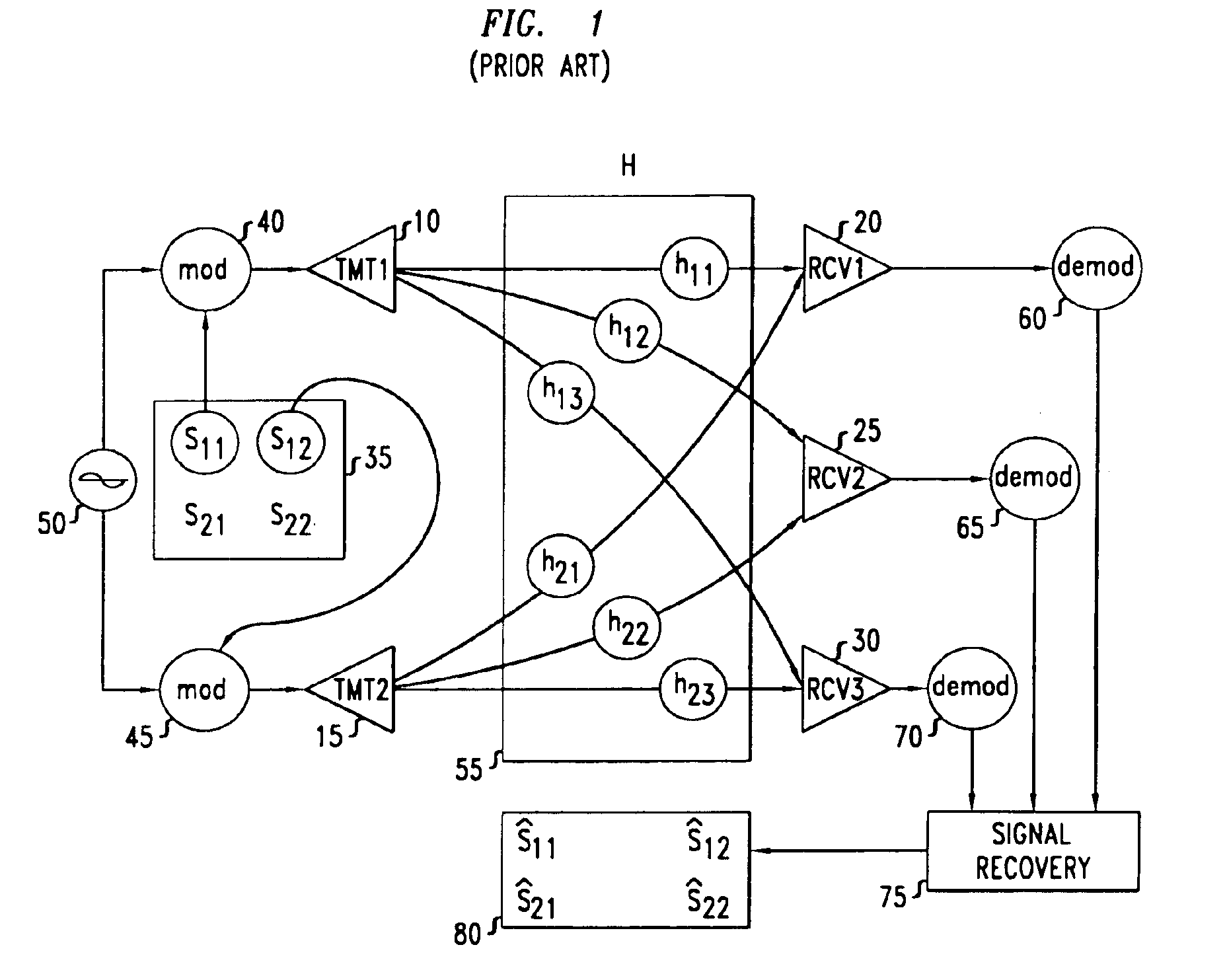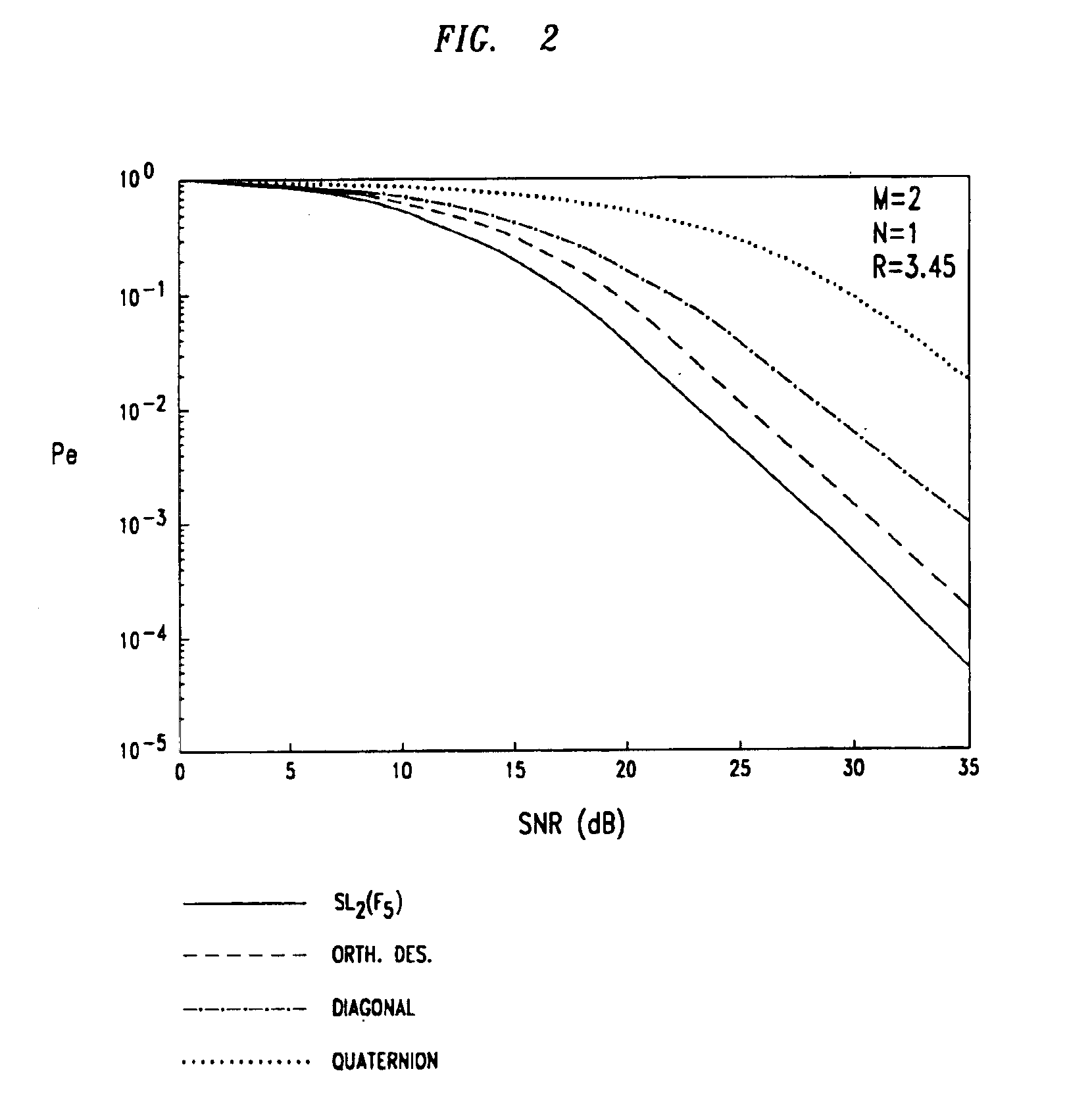Method and wireless communication using unitary space-time signal constellations
a technology of unitary spacetime and signal constellations, applied in the direction of wireless communication, polarisation/directional diversity, wireless communication, etc., can solve the problems of general variation of the attenuation and phase delay of the received signal, the likelihood of error, and the general effect of destructive interference and other physical effects
- Summary
- Abstract
- Description
- Claims
- Application Information
AI Technical Summary
Problems solved by technology
Method used
Image
Examples
example 2 (
9 antennas). Let n=9 and take r=4 and m=57. Then we have r.sub.0 =3 and t=19, gcd(n,t)=1, and all prime divisors of n divide r.sub.0. Hence G.sub.57,4 is fixed-point-free. If we set .eta.=e.sup.2.pi.i / 57, and ##EQU11##
where diag (a.sub.l, . . . , a.sub.n) denotes the diagonal matrix with diagonal entries a.sub.l, . . . , a.sub.n, then the 513 matrices A.sup.l B.sup.k, where l=0, . . . , 56, and k=0, . . . , 8 form the group G.sub.57,4 under matrix multiplication with the identification .sigma..ident.A, .tau..ident.B. We have .zeta..sub.G.sub..sub.57,4 =0.361. This 9-antenna, 513-element constellation exceeds rate 1 by one element.
Classification of Fixed-point-free Groups.
We have classified all fixed-point-free groups and computed all the irreducible fixed-point-free representations of these groups. As will be appreciated by those skilled in the art, a representation .DELTA.(g) of a group G having elements g is reducible if for some invertible complex linear transformation T and some...
PUM
 Login to View More
Login to View More Abstract
Description
Claims
Application Information
 Login to View More
Login to View More - R&D
- Intellectual Property
- Life Sciences
- Materials
- Tech Scout
- Unparalleled Data Quality
- Higher Quality Content
- 60% Fewer Hallucinations
Browse by: Latest US Patents, China's latest patents, Technical Efficacy Thesaurus, Application Domain, Technology Topic, Popular Technical Reports.
© 2025 PatSnap. All rights reserved.Legal|Privacy policy|Modern Slavery Act Transparency Statement|Sitemap|About US| Contact US: help@patsnap.com



